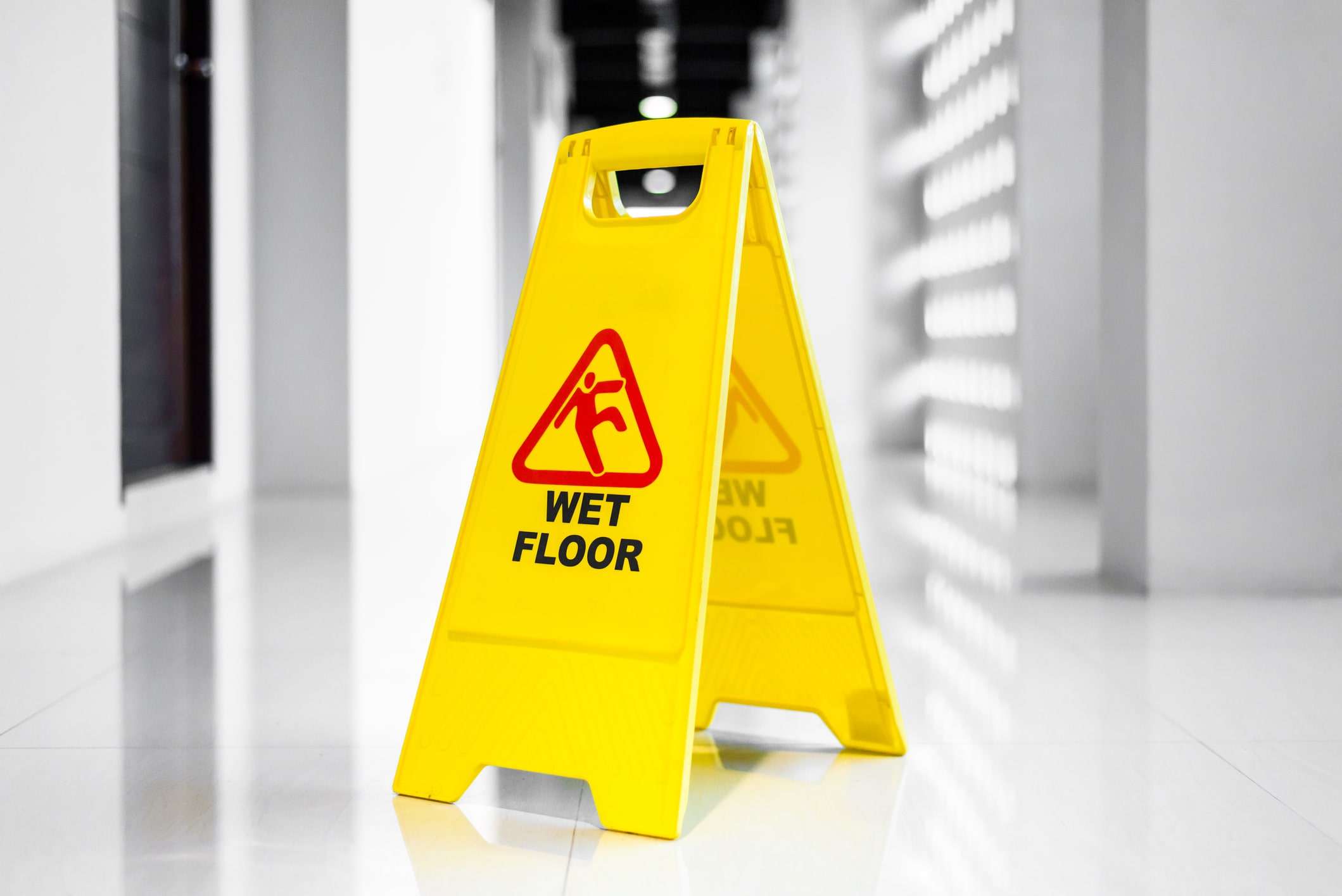Preventing slips, trips, and falls in healthcare settings is a critical safety concern for patients and staff. In addition to causing serious injury, these incidents can lead to costly lawsuits, lost productivity, and damage to an organization’s reputation.
The Occupational Safety and Health Administration (OSHA) provides guidelines for preventing slips, trips, and falls in healthcare facilities, including requirements for proper floor maintenance, footwear, and safety equipment. The Centers for Medicare & Medicaid Services (CMS) also has regulations that require healthcare facilities to maintain a safe environment for patients and staff.
Maintaining a safe work environment is a responsibility of the compliance team. In this blog post, we’ll explain the importance of preventing workplace injuries and how training, incident reporting, and policies help you keep a safe environment.

Be ready for inspections from OSHA, OCR, CMS, and OIG.
Workplace Injuries & Incidents by the Numbers
Slips, trips, and falls are significant causes of injuries in any workplace. According to data from the U.S. Centers for Disease Control and Prevention (CDC), in 2020 workers experienced over ~1,176,340 nonfatal work injuries that resulted in missed work time. Of these, ~196,140 (18%) were related to slips, trips, and falls; roughly 127 per 10,000 full-time equivalent (FTE) workers were hospitalized.
Regarding specific types of injuries, falls on the same level (i.e., slips and trips) accounted for 51% of all slips, trips, and falls in healthcare and social assistance settings in 2020. Falls to a lower level (such as falls from ladders, scaffolds, or elevated platforms) accounted for 37%, while the remaining 12% were due to other factors, such as being struck by an object or caught in equipment.
The data highlights the importance of preventing slips, trips, and falls in healthcare settings to ensure healthcare workers’ and patients’ safety and well-being. By implementing safety measures and incident reporting protocols, healthcare facilities can reduce the risk of injuries and create a safer environment.
Steps to Improving Workplace Safety
To achieve compliance with these regulations, healthcare facilities can implement several measures. Here are some suggestions:
- Conduct a hazard assessment: Identify and assess potential hazards in the facility, such as uneven flooring, wet or slippery surfaces, and cluttered areas.
- Implement housekeeping procedures: Establish policies and procedures for cleaning and maintaining floors, including routine cleaning schedules and protocols for spills or wet areas.
- Install slip-resistant flooring: Consider installing slip-resistant flooring in high-risk areas such as entrances, bathrooms, and kitchens.
- Provide proper footwear: Encourage or require staff to wear appropriate footwear with slip-resistant soles.
- Ensure proper lighting: Make sure all areas of the facility are well-lit to help staff and patients see potential hazards.
- Conduct regular safety inspections: Conduct regular safety inspections of the facility to identify and address potential hazards.
- Establish policies for patient safety: Educate patients and their families about potential hazards and provide guidelines for safe movement within the facility.
- Train staff: Provide staff training on safe practices and the importance of incident reporting.
- Monitor compliance: Monitor compliance with safety policies and procedures and ensure that staff members follow established protocols.
Compliance Tools to Reduce Accidents & Injuries
Compliance Training
Training programs educate employees on identifying potential slip, trip, and fall hazards in their environment, such as wet floors, cluttered walkways, uneven surfaces, and improper use of equipment. It also teaches specific safe work practices, such as proper cleanup of spills, maintenance of clean and unobstructed walkways, and correct storage of materials. This proactive approach not only ensures regulatory compliance but also builds a strong culture of safety, ultimately leading to healthier, safer work environments.
Document & Policy Management
Policies provide a structured framework to guide the behavior of organizations and their employees, ensuring that they meet legal, ethical, and professional standards. Standardized procedures and protocols ensure consistency across the organization, which is crucial for maintaining quality of care and minimizing errors that could lead to non-compliance issues. It is vital that employees are able to easily access policies from anywhere. Often the policy is needed immediately following a slip, trip, or fall and easy access will improve the chances of the incident being handled appropriately.
Incident Reporting
Incident reporting is valuable for preventing slips, trips, and falls in healthcare settings. It enables healthcare facilities to identify potential hazards, take corrective action, provide additional training, and monitor compliance with safety policies and procedures. Using incident reporting to inform prevention efforts, healthcare facilities can create a safer environment for patients and staff, improve health outcomes, and reduce the risk of costly lawsuits and other adverse outcomes. Additionally, the information collected through incident reporting helps identify patterns and trends in incidents and to make informed decisions about where to focus prevention efforts. For example, suppose multiple incidents occur in the same location, such as a particular hallway or patient room. In that case, the facility can investigate the cause and take corrective action, such as repairing flooring, improving lighting, or increasing housekeeping frequency.
Improve Workplace Safety With an All-In-One Compliance Platform
MedTrainer’s all-in-one compliance platform brings education, documentation, incident reporting, and more into one cloud-based solution.
- Education. MedTrainer’s course library includes nearly 1,000 healthcare specific courses and 300+ continuing education courses, along with a modern learning management system with customizable reporting.
- Document Management. Manage every aspect of healthcare policy management from creation to board approval, electronic signature, and reporting for surveyors.
- Incident Reporting. Create an unlimited number of customizable templates, enjoy comprehensive reporting, and the ability for employees to submit anonymously.
